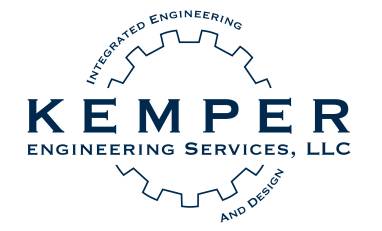Veda Thipparthi, Ana Escobar, and Bart Kemper co-authored papers presented at this year’s ASME Pressure Vessel and Piping Conference. All of ASME’s conferences and meetings are “virtual” for 2021. Undaunted, KES used the opportunity to continue to publish findings related to the ongoing Design By Analysis for Glassy Polymers project.
One paper presented was PVP2021-62146 Validation of Modern Finite Element Analysis Methods for Glassy Polymers Using Historical Studies. This paper focused on the roots of the ASME Pressure Vessel for Human Occupancy (PVHO) codes and standards and how initial studies using the Finite Element Method tools available at the time did not properly represent the physical testing. This led to a misunderstanding related to acrylic in PVHO service that precluded the use of modern computational methods. https://doi.org/10.1115/PVP2021-62146
The other paper was PVP2021-6214 Failure Modes for Acrylic Polymers in Section VIII Pressure Vessels. In addition to the three KES engineers, we had the expertise of Guy Richards of Blanson Acrylic Engineering, Ltd. and Taylor Nappi of US Navy Deep Submergence. ASME is in the process of allowing acrylics to be used as a conventional pressure vessel material and is referring Boiler and Pressure Vessel Code users to use ASME PVHO-1, Safety Standards for Pressure Vessels for Human Occupancy, to design the acrylic portions. The challenge is glassy polymers are unlike conventional pressure vessel materials, so this paper was designed to be an introduction of acrylics to the conventional pressure vessel design community. https://doi.org/10.1115/PVP2021-62148
This is part of KES’s ongoing support for the ASME task group for Design By Analysis for Glassy Polymers, an effort to use modern engineering techniques for polymers in structural applications. This includes past work by KES team members Linda Cross, Krista Kemper, and Jade Cutter. This work is being shared with engineers with NASA, the US Navy, and other interested parties to ensure the final version of the method is safe and reliable.


Recent Comments